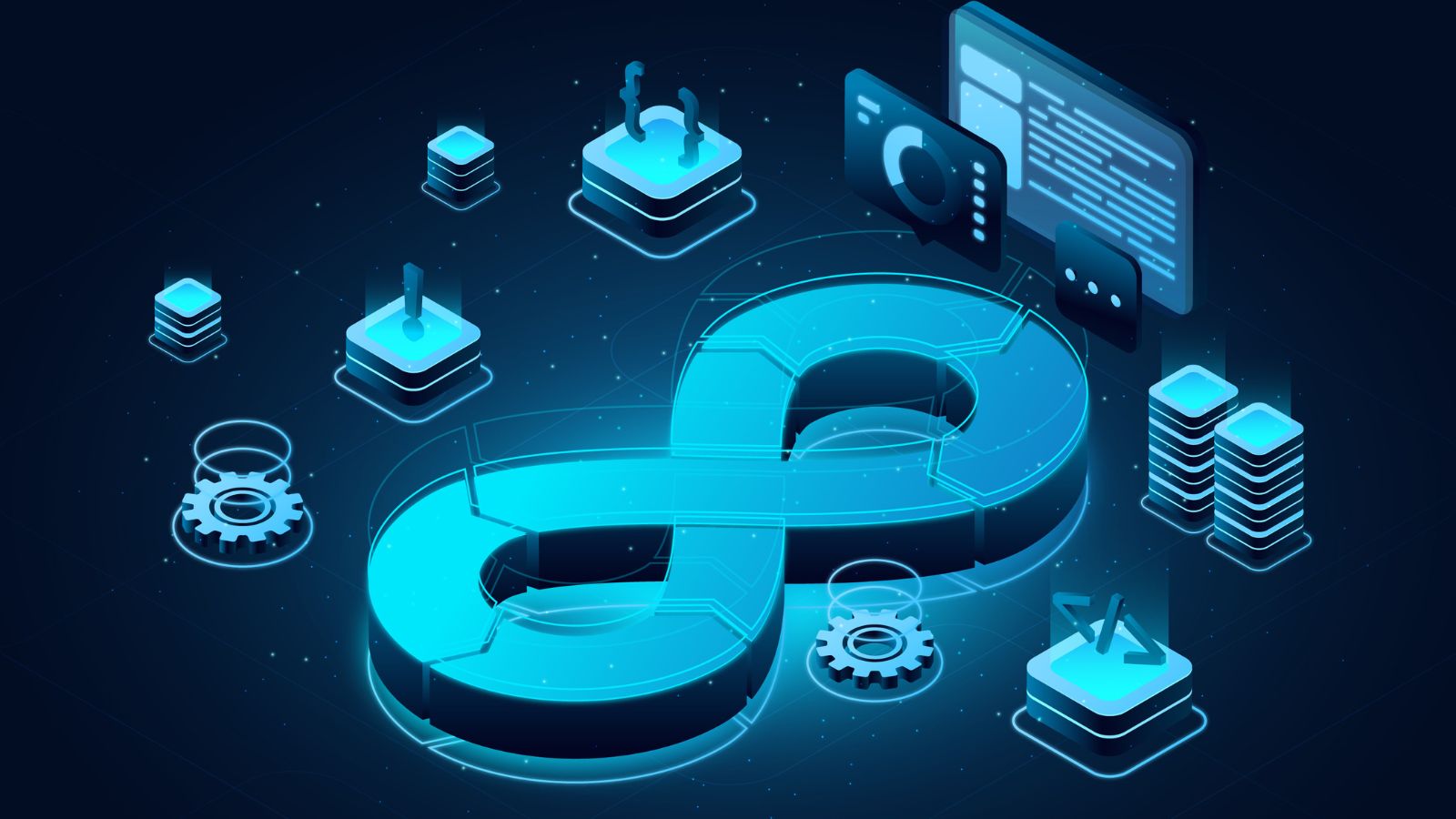DevSecOps - Best Practices for Building Secure Software
The best way for businesses to include security in their DevOps pipelines is to use tools and procedures that bring together the teams responsible for application development, IT operations, QA testing, and security under a single DevSecOps umbrella. Implementation of DevSecOps has become an integral part of digital transformation solutions.
Instead of adding security later in the cycle as has traditionally been the case with waterfall development methods, the idea is to integrate security into the software development workflow using safe coding best practices and testing automation.
This change challenges formerly compartmentalized organizations to develop methods to cooperate to make frequent yet secure code releases. It also challenges conventional ideas about how, when, and where security measures should be included in the software.
Read Also: DevSecOps - Understanding the Dynamics of WHAT, WHY, and HOW
DevSecOps: Top 10 Best Practices for Building Secure Software
Modern IT businesses struggle to create safe software while meeting the market's demands for speed and scalability. Using these DevSecOps best practices will help companies overcome the frequent issues they encounter while transitioning from DevOps to DevSecOps.
1. Encourage a DevSecOps culture and outlookAlthough there are several definitions of DevSecOps, collaboration, automation, learning, measuring, and sharing (CALMS), which was developed by Jez Humble and Meera Rao of Synopsys, is the one that is most well recognized.
DevSecOps is fundamentally based on a mentality and culture in which multiple cross-functional teams collaborate toward a common objective: continuous software security.
It's ideal to start with a few self-motivated and dedicated teams that are in line with the objectives of strategic DevSecOps projects in order to establish a DevSecOps culture.
These teams use the strategic initiatives as a set of guidelines as they attempt to integrate DevSecOps practices into routine tasks while balancing security, speed, and scale.
2. Allow teams to incorporate securityIt's easier said than done to "bake security in," even though it makes perfect sense. Lack of knowledge, tools, or procedures for integrating security into software is one of the main issues that teams encounter.
To ensure that teams can create safe software, it is essential to provide them with the required tools to accomplish this aim.
Before even developing the first line of code for the software, security must be ensured.
The security needs and controls to be applied during the software development life cycle might be shaped by security activities like threat modeling and architectural reviews (SDLC).
3. Decide the ‘when’Every company that wishes to include security in its DevOps processes will likely struggle with choosing between what security tasks are necessary and what kind of gear to purchase. The idea is to consider when a security action is carried out in an SDLC first.
When implementing DevSecOps, each organization operates in a certain style that is exclusive to it, depending on its industry, maturity, and culture. Security checkpoint placement will be different as well. In this case, you will need supervision from one of the top digital transformation solutions companies like TransformHub.
Each checkpoint may be used to show which security action and tool is most appropriate after deciding when to carry out security activities. In the aforementioned example, security testing might be moved even farther to the left by implementing a pre-commit security scan or an IDE-based scan.
4. Automate procedures and toolsWhen integrating security integrations with rapidity and scale, automation is essential. The adoption of DevOps and DevSecOps both place a strong emphasis on automation. Teams may adopt DevSecOps best practices by automating security tools and procedures.
Automation guarantees reliable, repeatable, and consistent usage of tools and procedures. It's critical to determine which security procedures and processes can be fully automated and which still call for some manual involvement.
The technology and tools that are employed also have a role in the effectiveness of an automation approach. If a tool provides adequate interfaces to enable its interaction with other subsystems, it is one factor to take into account while automating processes.
5. Get going quickly and modestlyOrganizations and teams frequently allow an overwhelming range of rulesets and scan configurations when they first begin integrating security activities and scanners into a DevSecOps pipeline.
This hinders the adoption of DevSecOps in two ways.
Firstly, development teams are reluctant to handle security issues since they suddenly have a large number of security findings in their queues, making it hard for them to complete all of them in a brief sprint.
Secondly, the entire DevSecOps culture may be in danger if development teams stop supporting and accepting it.
Starting small and early is essential, for this reason. The breadth of security testing should be steadily increased, and it should start as late in the SDLC as practicable.
6. Integrate the outside bandAlthough DevSecOps adoption mostly relies on automation, some security tasks must still be done manually and out-of-band.
Often, these tasks are completed according to a set timetable, typically once a quarter. Yet, this could lead to either performing such things too little or too much.
To balance the need, out-of-band operations might be started when certain automatic pipeline events occur.
7. Treat security flaws like software flawsSecurity flaws are frequently disclosed in a different way than aesthetic and functional flaws.
Organizations frequently keep their security and quality results in two separate places. As a result, each team and job are less visible when examining the project's overall security posture.
Teams may tackle both security and quality concerns equally by keeping their findings in one location and treating them similarly.
Security results can really be false positives, especially those that come from automated scanning technologies.
Under such circumstances, it becomes difficult to request that engineers investigate and resolve such issues.
Security tools may be improved over time by examining past discoveries and application data, implementing filters, and creating custom rulesets that only flag serious vulnerabilities.
8. Track each stepMeasuring success or failure is a requirement of following DevSecOps best practices.
This is accomplished by gathering information on the many elements and characteristics that contribute to DevSecOps and extracting practical metrics from them.
A complete metrics program gives insight into successes and failures by integrating people, processes, and technology components holistically.
Metrics should, for instance, shed light on failures resulting from individuals not adopting clearly defined procedures as well as failures resulting from ineffective tool use as a result of a lack of clearly defined processes.
Measuring and gathering pertinent data at each level of the pipeline and security actions is crucial to achieving this. If practical, automation should be used to regularly and reliably collect the data points needed for measurements.
The number and kind of security scans carried out across the SDLC, the amount of serious security and quality concerns identified by an application, the time required for pipeline execution, and many other variables may all be tracked and utilized to create metrics.
With this information, teams may develop KPIs that will contribute to a general decrease in defect density, preproduction security flaws, and mean time to deployment.
9. Learn from mistakesThe adoption of DevSecOps is constantly iterative. There will always be some failures during continuous integration and measurement.
They should ideally be applied to assist teams in growing and learning. Any DevSecOps pipeline that doesn't acknowledge failures or respond to them in any way isn't really practicing DevSecOps.
DevSecOps directly benefits from the "Three Ways" DevOps tenet.
- First Method: To guarantee the success of the end-to-end system, never send a known failure or a known major security fault onto downstream activities.
- Second Method: To shorten feedback loops by immediately reporting any failure, including security.
- Third Method: To create a more secure development culture by applying the same techniques as the first and second methods—learning from past mistakes, iterating, and addressing new flaws/failures.
The core objective of DevSecOps—to guarantee quick, secure, and reliable software delivery—is incompatible with traditional governance structures, which drastically slow down delivery velocity.
The software delivery pipeline should be checked using governance as code, which should also include the necessary triggers for manual intervention to address escalations, exceptions, and the implementation of compensatory measures.
Take the sign-off gates that an organization generally has before its release as an illustration of governance. The sign-off gates are frequently the direct implementation of the controls a project desires to have, allowing for the assessment of the security state before the success of a significant SDLC milestone.
How To Begin?
The transition of your company to DevSecOps is a major operation with several known and unknowable difficulties.
It's critical to remember that DevSecOps is not a ready-made product or a "golden pipeline"; rather, each business will need the plan to make it a reality.
Lay the groundwork with these DevSecOps best practices. Rome, after all, wasn't constructed overnight.
Today's apps increasingly leverage open-source and cloud-native technology; thus, security tools and procedures must be updated to keep up with the rate of change.
The best practices mentioned in this blog may be put into reality with the help of TransformHub, one of the best digital transformation companies in Singapore.
Our team of professionals ensures the success of your DevSecOps program by providing precisely tailored solutions according to your business requirements.
Are you prepared to implement DevSecOps principles? Let's connect right away.
Share this
You May Also Like
These Related Stories

DevSecOps - Understanding the Dynamics of WHAT, WHY, and HOW

What Happens If You Don’t Do DevSecOps?




